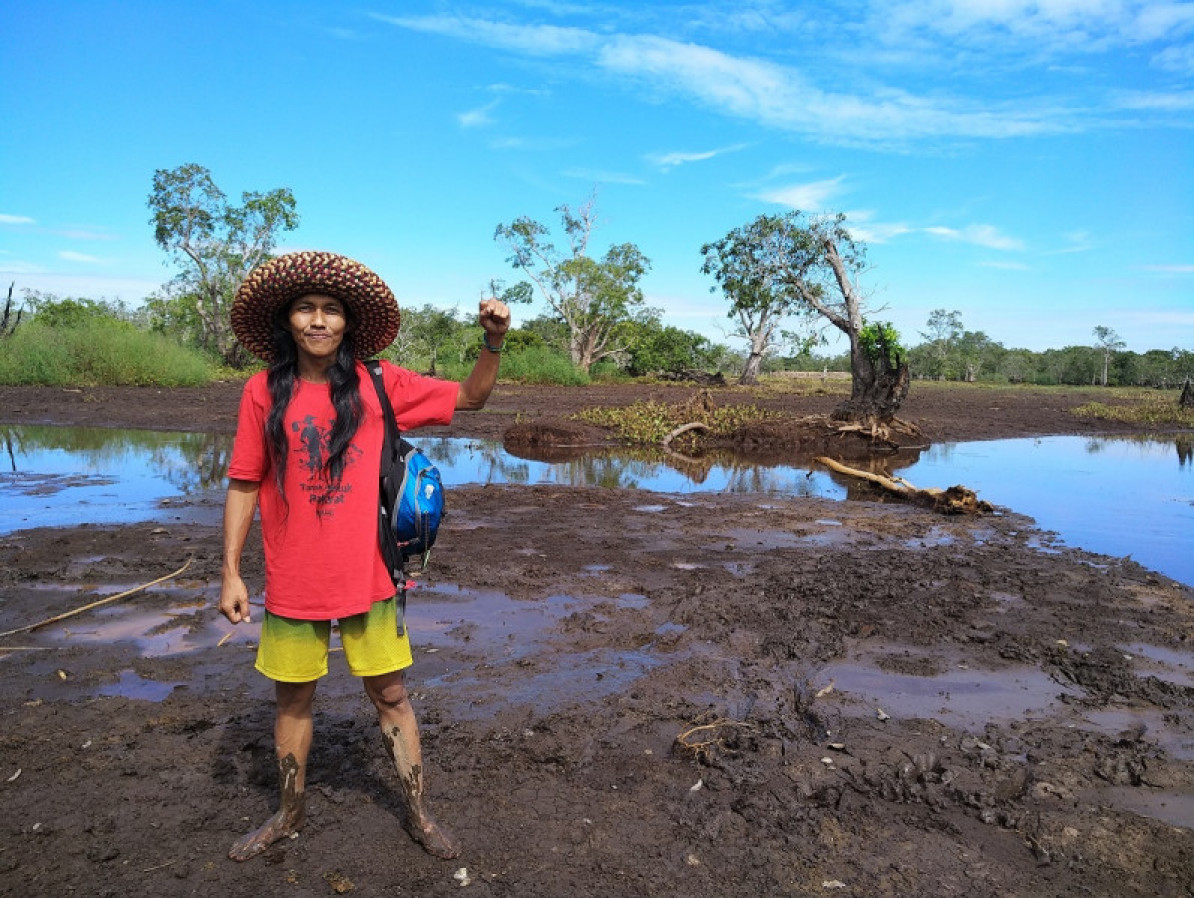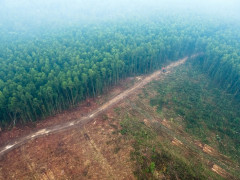Contemplating the Fate of Peat and Riau’s Green Commitment Post Omnibus Law
By Romes IrawanPeat: The Stepchild of the South Kalimantan Regional Elections

The 2020 Regional Election, which will take place on 23 September 2020, in South Kalimantan has increased the political tension. The political map is very dynamic in the seven districts, cities, and provinces that will hold the Regional Election. The figures who will compete for the regional head position have come and gone. Certain names with claims of support and backing from political parties often appear, then slowly but surely disappear.
The fluidity of the political map is mostly due to the fact that the large coalition of parties at the highest level of the Election has yet to be solidified. Usually, large coalitions at the provincial level will be established and followed by the political parties in the districts and cities. However, this has not happened so far. This affected the figures who will advance through individual or independent channels.
For example, in one of the districts in South Kalimantan, this is the first time so many people have nominated themselves through independent channels. Usually, there will only be three to five candidates. What’s unique is that the public, as well as the political parties, are more often busy with their own political scheming, calculations, and strategies in order to win the Regional Election. Almost all of their energy is spent on it and not on the issues and various focus that they can use as their political selling points.
Actually not much has changed and there is nothing new in terms of the political issues used by the various figures as their selling point in the 2020 South Kalimantan Regional Election. They tend to use general and infrastructure, education, and health-related issues. Meanwhile, environmental issues, whether general or specific, have not yet become a concern or focus that these figures are trying to sell to their constituents. Environmental issues seem to have become a 'stepchild' at every political event because it’s not considered sexy, does not attract attention, does not sell, and will not be able to increase the number of votes for the candidates.
When in fact, based on the environmental conditions in South Kalimantan, this issue should be the main selling point for every candidate competing in the Regional Election. Especially when the Regional Election is held in a district or city that is experiencing an environmental emergency. For example, in a location with a large peat swamp ecosystem that burns during the dry season, as experienced in 2015 and 2019. Or in a district/city with an abundant number of coal mining and oil palm plantations permits. However, environmental issues, especially related to peat swamp ecosystems, have never been the focus of the candidates in such areas.
In fact, the South Kalimantan Environment Agency has noted that at least 58,342 hectares or 60 percent of the 106,000 hectares of peatland in South Kalimantan are damaged. These peatland areas are considered damaged based on their restoration priorities, whether the damage is on the canaled peat domes or due to the South Kalimantan fires in 2015, the damage occurred in 45,567 ha and 11,775.8 ha of land.
BRG data shows that approximately 2.5 million hectares of peatland areas have been damaged in Indonesia, mainly due to forest and land fires. The damaged peatland areas are spread over 1,205 villages in seven provinces, most of which are categorized as underdeveloped villages and very underdeveloped villages.
Data issued by the Peatland Restoration Agency (BRG), for example, states that last year's peat restoration in South Kalimantan was carried out on damaged peatland covering an area of 105,023 hectares spread over four peat hydrological units (KHG). The area includes the Barito River-Alalak River KHG which covers an area of 47,935 hectares with 20,301 hectares of peatland. Another area is the Utar River-Serapat River KHG which covers an area of 107,737 hectares with 27,176 hectares of peatland. The restoration was also carried out on the Balangan River-Batangalai River KHG covering an area of 30,859 hectares with 11,008 hectares of peatland and the Barito River- Tapin River KHG which covers an area of 112,227 hectares with 45,998 hectares of peatland.
The four KHGs are located in eight districts, namely Balangan, Banjar, Barito Kuala, Hulu Sungai Tengah, Hulu Sungai Selatan, Hulu Sungai Utara, Tabalong, and Tapin. Based on the 2016 BRG Peatland Restoration Indicative Map, the Peat Hydrological Unit Map, and 2017 MoEF National Peat Ecosystem Function Map, the restoration priority areas in South Kalimantan include the following: Peatlands affected by the forest, land, and plantation fires in 2015, which covers an area of 12,798 hectares. Cultivation areas, including land with plantation area permit, covers an area of 1,586 hectares. Unlicensed forest area, which covers an area of 6,728 hectares, and other designated areas not meant for cultivation rights usage, which covers an area of 4,484 hectares.
A total of 45,836 hectares of the peat domes or deep peat areas that have already been designated as cultivation area has been restored. This consists of 26,022 hectares of land use rights area, 1,579 hectares of unlicensed forest area, and 18,235 hectares of APL area.
The protection of uncleared and intact peat areas covers an area of 33,398 hectares. Which consists of 1,485 hectares of HGU cultivation area, 10,468 hectares of other designated areas not meant for cultivation rights usage, and 21,445 hectares of unlicensed forest area.
The restoration effort must also take measures to improve the water management and improve the control infrastructure in 12,444 hectares of cultivation area. Which consists of 1,084 hectares of HGU area, 5,414 hectares of unlicensed forest area, and 7,135 hectares of other designated areas not intended for cultivation. At a national scale, BRG is assigned to restore 2 million hectares of peat in seven provinces by 2020. South Kalimantan Province is one of the provinces targeted for peatland area restoration in four districts, covering an area of 35,000 hectares.
To date, almost no candidate in the 2020 South Kalimantan Regional Election has the vision and mission to prioritize the environment and peat swamp ecosystem when they are elected into office. Looking at the same conditions in the 2018 Regional Election, environmental issues and peat swamp ecosystems have never been a focus in South Kalimantan.
As shown in the image below, NOAA's MODIS (National Oceanic and Atmospheric Administration) sensor data for February to mid-May 2018, which coincided with the election campaign period, showed that there were hundreds of hot spots which could potentially cause fires in peat restoration priority locations. However, at the time, the hotspots and forest and land fires that occurred in South Kalimantan did not become a concern for the candidates competing in the Regional Election. This year, the same holds true.
Based on the data and facts, the public may need to think more critically before voting in the Regional Election. One vote is very valuable, hence it should only be given to someone who is concerned and has a clear plan to save the South Kalimantan environment and peat swamp ecosystem and each district/city.
**THIS WRITING WAS PREVIOUSLY PUBLISHED IN THE OPINION COLUMN OF RADAR BANJARMASIN ON 4 MARCH 2020 AND UPLOADED ON JEJAKREKAM.COM ONLINE MEDIA PORTAL **



